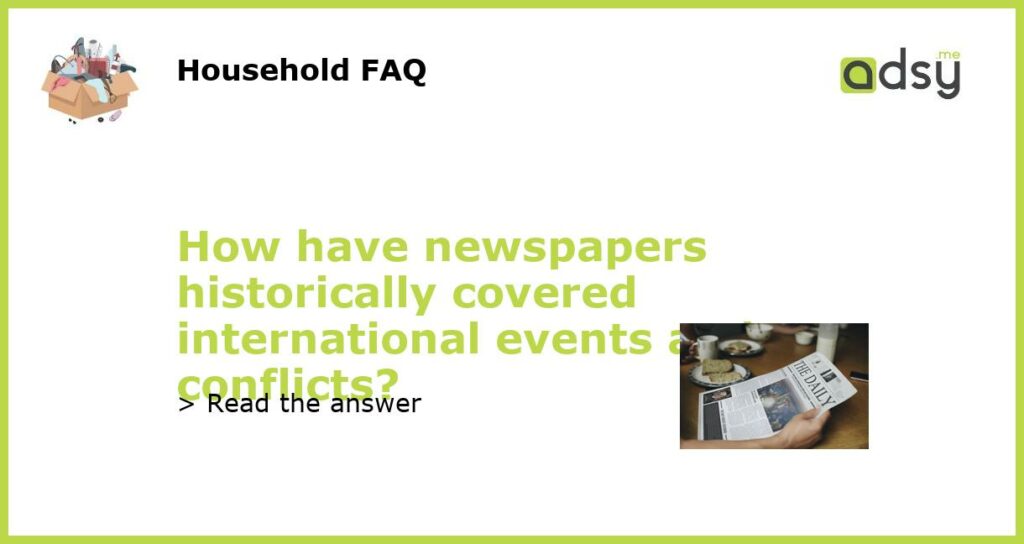Newspapers and the Reporting of International Conflicts
For centuries, newspapers have been the primary medium through which the general public receives news about national, regional, and global events. In the era before radio, television, and the internet, newspapers were the only source of information about international conflicts and political events beyond one’s immediate geographic area. How have newspapers historically covered international events and conflicts? Let’s take a closer look.
Early Newspaper Coverage
In the early days of newspaper publishing, news about international events was often delivered days or even weeks after the event occurred, owing to the slow pace of transportation and communication. Information was often incomplete or inaccurate, as news traveled by word of mouth or from unreliable sources. By the late 19th century, the use of telegraphy enabled newspapers to report events with greater speed and accuracy. However, papers were still prone to bias and sensationalism. Newspaper owners were often politically aligned and used their publications to promote their own agendas, color the facts, or disseminate propaganda.
The Advent of War Correspondents and Photojournalism
The advent of war correspondents during the American Civil War and the Franco-Prussian War in the 1860s and 1870s marked a significant development in the history of newspaper coverage. Correspondents were journalists who traveled to the conflict zone to report on events firsthand. These reporters lived with soldiers, observed battles, and interviewed military leaders. They sent dispatches back to their home newspapers, which were eagerly awaited by readers. War correspondents were often celebrated for their bravery and dedication to the truth. The Vietnam War marked another turning point in the history of newspaper coverage, with the widespread use of photojournalism bringing the stark reality of modern warfare into American homes for the first time. Pictures of dead and injured soldiers, burnt-out villages, and civilians caught in the crossfire had a profound impact on public opinion and shaped the course of the war.
Cold War Coverage and the Rise of Television
The Cold War era was marked by intense global conflict, but coverage of such events shifted with the rise of television news broadcasts. News anchors like Walter Cronkite and Dan Rather became household names, and millions of Americans tuned in to watch their nightly coverage of events like the Cuban Missile Crisis and the Vietnam War. Television brought conflict into American homes in ways that newspapers never could, with footage of battles, explosions, and scenes of destruction. It also allowed viewers to see the faces of the soldiers and civilians involved in these conflicts, making the events more human and personal.
The Modern Era of Newspaper Coverage
The rise of the internet in the 1990s and 2000s marked a sea change in the history of newspaper coverage. Today, newspapers face intense competition from digital media outlets that offer real-time coverage of events as they unfold, often with greater accuracy and depth than traditional newspapers. Many newspapers have shifted their focus to analysis, opinion, and long-form narratives, recognizing that readers can get the basic facts from other sources. But newspapers continue to play a crucial role in shaping public opinion, particularly in the field of international affairs. Well-resourced and well-connected journalists provide in-depth coverage of complex events and offer readers a deeper understanding of the world beyond their own borders.






